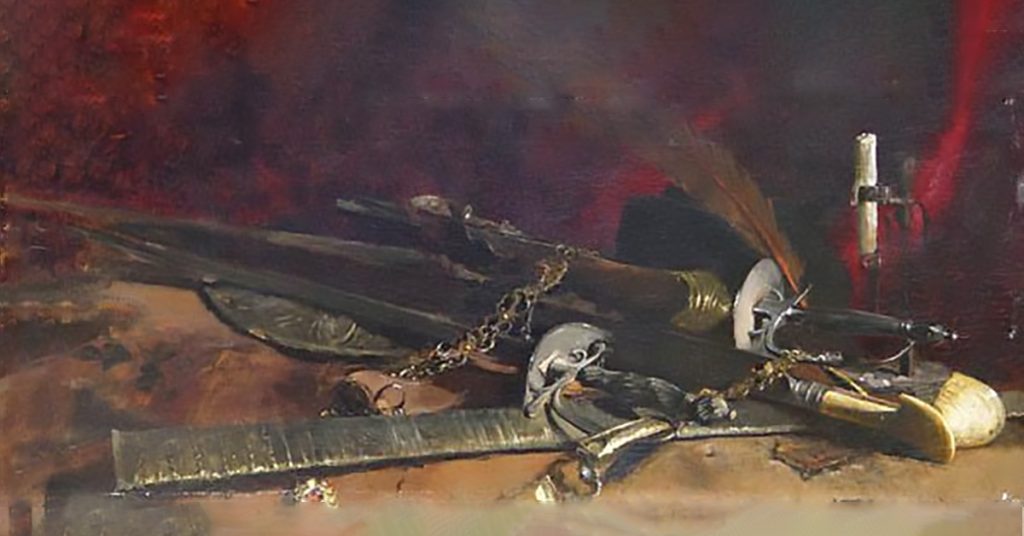Back to Melee Weapon Search
Langes messer
Sidearm, Rural, Sword, Blade, German, Czech, Slavic, Latin Europe, Messer
The messer (aka großmesser, grossemesser, hiebmesser, langes messer, also related to the dussack, hauswehr and baurenwehr) is a single-edged sword which was carried by farmers in Medieval Central Europe much like machetes are carried today by farmers in Latin America. Messer literally means ‘knife’ in German, and the hilt of a großmesser resembles that of a knife handle, made of two wedges of wood riveted to a wide, flat tang. There is a legend that the lack of a pommel may have originally been due to legal restrictions (i.e. sumptuary laws) but the same balancing effect was achieved by a lengthened handle and a cunningly widened tang.
The messer could be used as a tool or a weapon, though designed primarily as the latter. The messer probably a development of the sax, or the traditional baurenwehr. Compared to a machete a messer is stronger and a bit heavier, and usually featured a partial false-edge. Some messers were particularly well-made with differential hardening and a sophisticated heat treatment.
 Messer with a knucklebow and a sidering, Czech early 16th C. This would be a 3/4/4 weapon
Messer with a knucklebow and a sidering, Czech early 16th C. This would be a 3/4/4 weapon  Messer with a long grip and an elegant blade, South German, mid 15th C. This would be a 4/4/3 weapon
Messer with a long grip and an elegant blade, South German, mid 15th C. This would be a 4/4/3 weapon  A simple langes messer with crossguard and a nagel, South German, early 15th C
A simple langes messer with crossguard and a nagel, South German, early 15th C
| Name | Size | Reach | Speed | Defense | Base Damage | Attack Types | Primary Attack Types | Armor Pierce | Grapple | Hardness | HP |
|---|---|---|---|---|---|---|---|---|---|---|---|
| Langes messer | M | 3 | 4 | 3 | 1-8 | SCP | CP | 0 | 0 | 10 | 4 |
 Messer with a knucklebow and a sidering, Czech early 16th C. This would be a 3/4/4 weapon
Messer with a knucklebow and a sidering, Czech early 16th C. This would be a 3/4/4 weapon  Messer with a long grip and an elegant blade, South German, mid 15th C. This would be a 4/4/3 weapon
Messer with a long grip and an elegant blade, South German, mid 15th C. This would be a 4/4/3 weapon  A simple langes messer with crossguard and a nagel, South German, early 15th C
A simple langes messer with crossguard and a nagel, South German, early 15th C
